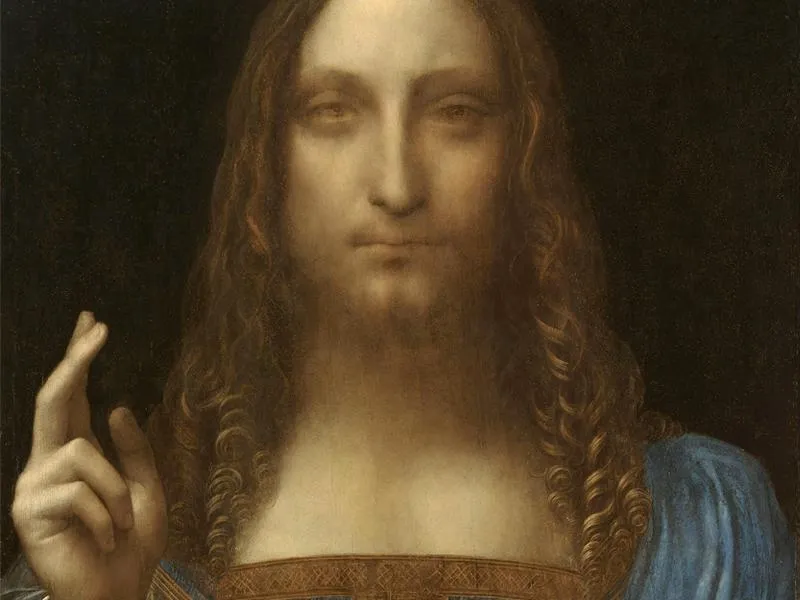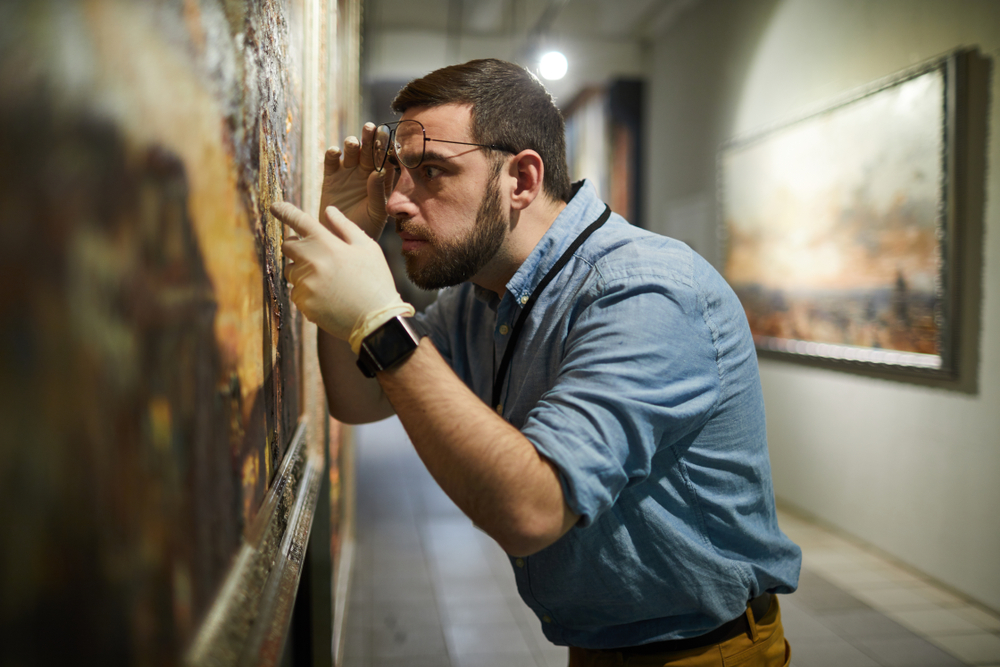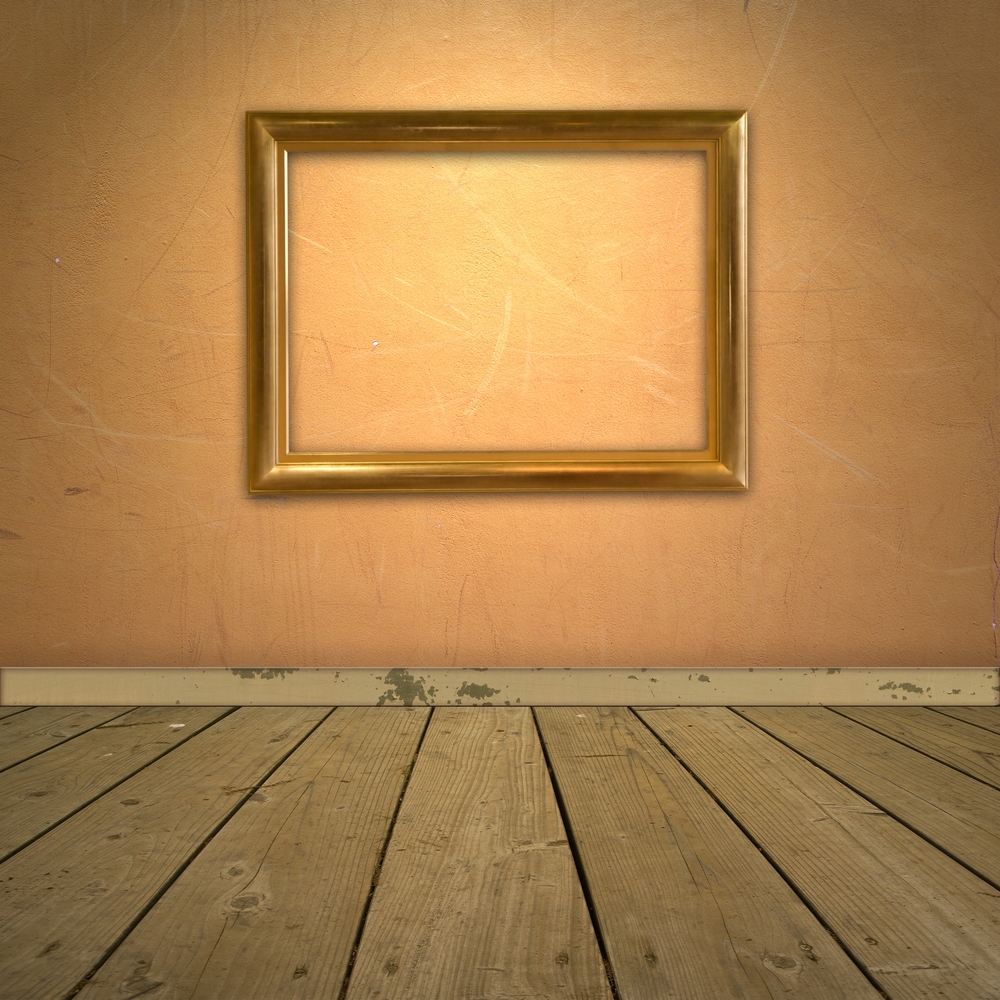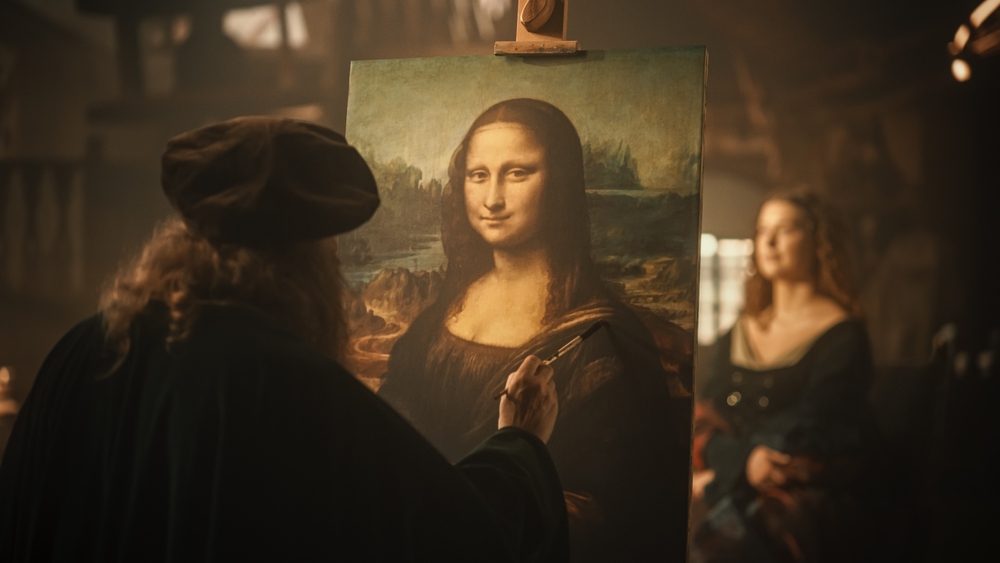When it comes to the world of art, few things generate more excitement and intrigue than the sale of a masterpiece. The allure of owning a piece of history, especially when it comes attached with a hefty price tag, is irresistible to collectors and museums alike. Whether it’s a stunning portrait or an abstract work, the most expensive paintings ever sold have fascinating stories that continue to captivate audiences worldwide. Let’s take a closer look at some of these incredible works and where they are now.
1. Leonardo da Vinci’s “Salvator Mundi”

“Salvator Mundi,” attributed to Leonardo da Vinci, shattered records when it sold for $450.3 million in 2017. This enigmatic painting, depicting Christ as the savior of the world, has a mysterious past with a touch of intrigue and debate over its authenticity. According to The New York Times, the painting was sold at a Christie’s auction to a Saudi prince on behalf of the Louvre Abu Dhabi. However, its current whereabouts have sparked much speculation, with some reports suggesting it remains in a high-security vault.
The painting’s journey has been as colorful as its status, having been lost and rediscovered several times over the centuries. It was believed to have been completed in the early 1500s, only to vanish until 1900 when it was mistakenly attributed to another artist. After being restored and authenticated, it was exhibited at the National Gallery in London in 2011. Since its sale, the art world has been buzzing about when, or if, it will be displayed publicly again. Its scarcity adds to its mystique, making it one of the most talked-about artworks of our time.
2. Pablo Picasso’s “Les Femmes d’Alger (Version O)”

According to Fair Art, Pablo Picasso’s vibrant masterpiece, “Les Femmes d’Alger (Version O),” sold for a staggering $179.4 million in 2015. The painting is part of a 15-work series Picasso created in the 1950s, inspired by the 19th-century artist Eugène Delacroix. Christie’s auction house facilitated the sale, making it one of the most expensive paintings ever sold at auction. This piece, bursting with color and energy, showcases Picasso’s fascination with the harems of Algeria.
Currently, the painting is housed in the private collection of a former Qatari prime minister, Hamad bin Jassim bin Jaber Al Thani. The whereabouts of “Les Femmes d’Alger (Version O)” are a closely guarded secret, though it is occasionally loaned to prestigious museums for special exhibitions. It’s a testament to Picasso’s enduring legacy and his ability to command such exceptional value. The painting’s allure lies in its composition and the layers of complexity that reflect Picasso’s genius.
3. Amedeo Modigliani’s “Nu couché”

The seductive allure of Amedeo Modigliani’s “Nu couché” was enough to fetch $170.4 million at a 2015 auction. This sultry painting, completed in 1917, features a reclining nude that pushed artistic boundaries at the time of its creation. According to CBC, the work was purchased by Chinese billionaire Liu Yiqian, who promptly made headlines by using his American Express card to complete the transaction. The painting now resides in the private collection of Liu Yiqian and his wife, Wang Wei.
The couple owns the Long Museum in Shanghai, where “Nu couché” is occasionally displayed for public viewing. Modigliani’s work is celebrated for its unique blend of sensuality and elegance, and “Nu couché” is no exception. This painting’s remarkable journey from scandal to a record-breaking auction illustrates the changing perceptions of art over time. Its presence in China also underscores the country’s growing influence in the international art market.
4. Gustav Klimt’s “The Portrait of Adele Bloch-Bauer I”

Gustav Klimt’s opulent masterpiece, “The Portrait of Adele Bloch-Bauer I,” holds a special place in art history and is renowned for its stunning use of gold leaf. This painting was sold for $135 million in 2006 to cosmetics magnate Ronald Lauder for the Neue Galerie in New York. Often referred to as the “Austrian Mona Lisa,” this work is part of a larger series of portraits Klimt created during his “Golden Phase.” It was originally commissioned by Ferdinand Bloch-Bauer, Adele’s husband, and became a symbol of art restitution.
The painting’s history is marked by its confiscation by the Nazis during World War II, only to be returned to the Bloch-Bauer heirs after a lengthy legal battle. Its eventual sale to Lauder ensured that it would be accessible to the public, and it now resides permanently at the Neue Galerie. Visitors flock to the museum to admire its intricate patterns and the haunting gaze of Adele. The painting represents not only a triumph of art but also a victory for justice and cultural heritage.
5. Jackson Pollock’s “Number 17A”

Jackson Pollock’s “Number 17A” is a quintessential example of the artist’s signature drip painting technique, executed with kinetic energy. In 2016, it was sold for approximately $200 million as part of a private transaction between two collectors. The painting is a vibrant burst of color and movement, encapsulating the spirit of the Abstract Expressionist movement that Pollock spearheaded. The painting was acquired by hedge fund manager Kenneth C. Griffin and remains in his private collection.
Griffin is known for his impressive art purchases, often lending pieces to prestigious institutions for exhibitions. The acquisition of “Number 17A” solidified Pollock’s status as a titan of modern art. While the painting currently resides in a private collection, its occasional loan to museums ensures that Pollock’s genius continues to inspire new generations. The chaotic beauty of “Number 17A” exemplifies the power of abstraction and the emotional depth it can convey.
6. Willem de Kooning’s “Interchange”

Willem de Kooning’s “Interchange” is a masterful work that blends abstraction and figuration in a swirling dance of colors and forms. This iconic piece became the second most expensive painting ever when it was sold for $300 million in a private sale in 2015. Hedge fund billionaire Kenneth C. Griffin was the buyer, adding it to his impressive collection of modern art masterpieces. De Kooning’s daring use of color and form makes “Interchange” a standout example of his Abstract Expressionist style.
The painting is known for its energetic brushwork and dynamic composition, reflecting de Kooning’s innovative approach to art. Although it resides in Griffin’s private collection, “Interchange” is occasionally loaned for exhibitions, offering art enthusiasts a chance to experience its brilliance in person. The painting’s value lies not only in its price tag but in its enduring impact on the art world. De Kooning’s work continues to influence contemporary artists and captivate audiences with its bold creativity.
7. Paul Cézanne’s “The Card Players”

Paul Cézanne’s “The Card Players” is a series of five paintings, with one of them fetching an estimated $250 million in a private sale to the Royal Family of Qatar in 2011. This transaction marked a significant moment in art market history, as it underscored the rising influence of Middle Eastern collectors in the global art scene. Cézanne’s portrayal of rural card players is a testament to his innovative approach to composition and color. The painting is celebrated for its quiet intensity and the way it captures a slice of everyday life.
Now part of the Qatari royal collection, “The Card Players” is a prized possession among their extensive art holdings. The painting occasionally appears in exhibitions at the Qatar Museums, allowing the public to appreciate Cézanne’s masterful technique up close. This acquisition reflects the burgeoning interest in Impressionist and Post-Impressionist art among collectors in the Middle East. Cézanne’s influence on modern art remains profound, with “The Card Players” serving as a prime example of his enduring legacy.
8. Francis Bacon’s “Three Studies of Lucian Freud”

Francis Bacon’s “Three Studies of Lucian Freud” is a striking triptych that captures the intense relationship between two of the 20th century’s most important artists. This work achieved a remarkable $142.4 million at a 2013 Christie’s auction, setting a new record for the most expensive artwork sold at auction at the time. The paintings depict Bacon’s friend and fellow artist Lucian Freud, rendered in Bacon’s distinctive, raw style. The triptych format allows viewers to experience the dynamic interplay between the three panels.
Currently owned by Elaine Wynn, a prominent Las Vegas art collector and philanthropist, the work has been displayed at various exhibitions, including the Tate Britain in London. The triptych’s compelling portrayal of Freud highlights Bacon’s talent for capturing the psychological depth of his subjects. The sale of “Three Studies of Lucian Freud” demonstrated the enduring allure of Bacon’s work and its ability to command astronomical prices. It remains a testament to the power of friendship and creative rivalry in the art world.
9. Edvard Munch’s “The Scream”

“The Scream” by Edvard Munch is one of the most iconic images in art history, symbolizing existential angst and modern humanity’s inner turmoil. In 2012, one of the four versions of “The Scream” sold for $119.9 million at a Sotheby’s auction, setting a record at the time for the most expensive artwork sold at auction. This pastel version from 1895 was acquired by businessman Leon Black, who has since kept it in his private collection. Munch’s haunting depiction of a figure against a swirling sky has left an indelible mark on the public consciousness.
Though the painting is part of a private collection, it has been loaned to institutions such as the Museum of Modern Art in New York for public exhibitions. “The Scream” continues to resonate with audiences, encapsulating the universal experience of anxiety and despair. Munch’s innovative use of color and form has influenced countless artists and solidified his place in art history. The painting’s enduring popularity reflects its power to evoke emotion and provoke thought.
10. Gustav Klimt’s “Water Serpents II”

Gustav Klimt’s “Water Serpents II” is a lesser-known masterpiece that showcases the artist’s fascination with mythological subjects and sensual imagery. The painting was sold privately in 2013 for an estimated $183.8 million to an anonymous buyer. Klimt’s use of vibrant colors and intricate patterns creates a dreamlike quality that is characteristic of his most celebrated works. “Water Serpents II” exemplifies Klimt’s ability to blend eroticism with elegance, resulting in a captivating visual experience.
The painting’s current location remains undisclosed, adding to its mystique and allure. It is believed to be held in a private collection, where it is cherished as a rare and valuable work of art. Klimt’s “Water Serpents II” continues to enchant art lovers with its rich symbolism and exquisite craftsmanship. Its sale further cements Klimt’s reputation as a master of the early 20th century and underscores the lasting appeal of his unique artistic vision.
This article is for informational purposes only and should not be construed as financial advice. Consult a financial professional before making investment or other financial decisions. The author and publisher make no warranties of any kind.








